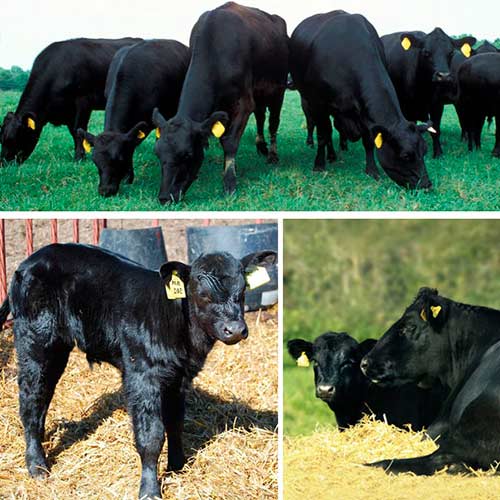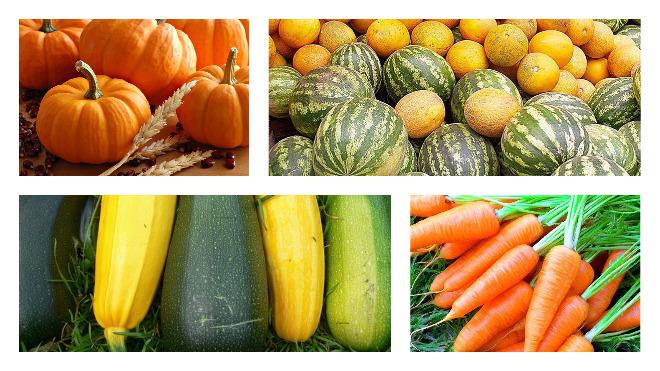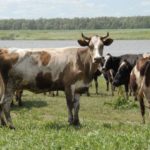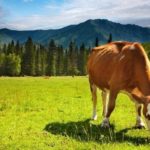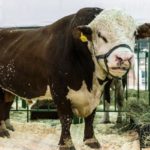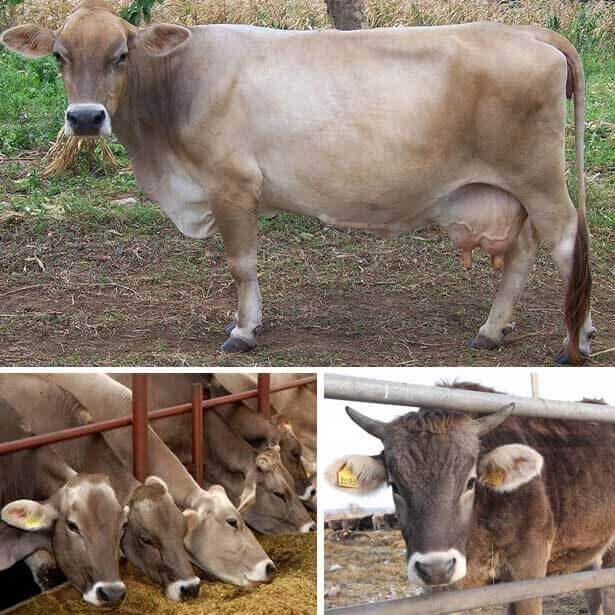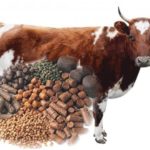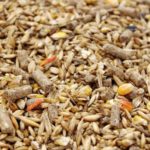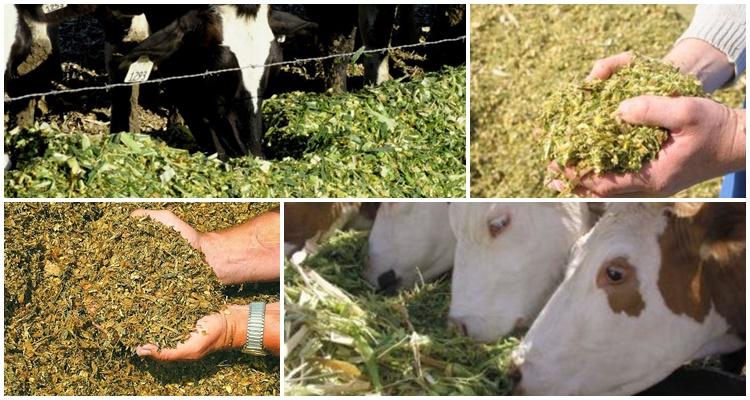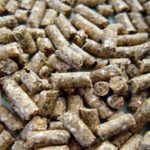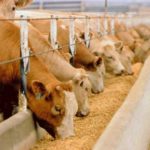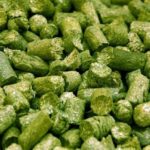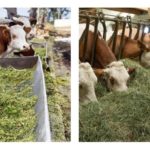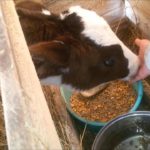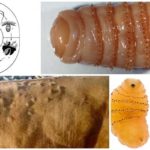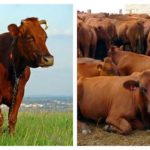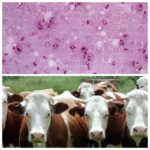Farmers who breed cattle pay great attention to the quality and balance of feed, since the productivity of animals depends on this. To produce feed for cattle, fresh and dried grass, succulent plant food, grain, and residues from flour milling and food production are used. To ensure that livestock produces high-quality meat and milk, concentrates, vitamin supplements, and feed from animal components are included in the diet.
Green feed
Green feed for cattle – meadow and floodplain grasses.Livestock are either taken out to pasture or the grass is cut to feed the animals. During the summer months, a cow eats 50-70 kg of fresh green feed daily. The grass is easily digested in the digestive tract of cattle, saturates the body with proteins, organic acids, vitamins, and mineral elements. Young plants are especially useful; in overgrown ones, the concentration of proteins and vitamins decreases.
It is desirable that among meadow grasses there be legumes saturated with phosphorus and calcium:
- clover;
- field peas;
- alfalfa;
- Vika.
1 kg of meadow grass contains 25 g of protein, 3 g of calcium, 0.8 g of phosphorus, and up to 70 mg of carotenoids. Nutritional value is 0.2 feed units.
Hay
During the winter months, hay becomes the main source of nutrients for cattle. A cow consumes up to 30 kg of dried grass per day. The richest in vitamins, minerals, and fiber is the hay obtained from meadow vegetation mowed in floodplains, on flood meadows, and on the slopes of hills. The nutritional value of roughage is determined not only by the plant composition, but also by compliance with mowing times, drying and storage rules.
The final moisture content of the dried grass should be 15-17%. Such hay is stored in a barn for a long time without loss of quality. Signs of food quality are a greenish tint, indicating a high concentration of amino acids, a pleasant aroma and the presence of not only stems, but also young leaves. The highest percentage of nutrients contains hay from plants cut in the initial flowering phase.
By feeding cattle with high-quality hay, you can get up to 10 liters of milk per day from one individual. 1 kg of meadow hay contains 50 g of protein, 6.5 g of calcium, 2 g of phosphorus, 10 mg of carotenoids.1 kg of clover contains 80 g of protein, 13 g of calcium, 3.5 g of phosphorus, 25 mg of carotenoids. Nutritional value – 0.5 feed unit. Dried leaves of cereals and beans contain 2 times more proteins and minerals, 10 times more carotenoids than shoots.
Roots, tubers and melons
For feeding cattle use:
- fodder beet;
- turnips (fodder turnip);
- rutabaga;
- carrots;
- pumpkin;
- zucchini;
- potato tubers (raw, after germination - boiled);
- Jerusalem artichoke;
- feed watermelon
The listed succulent feeds have a milk-producing effect, are easily digestible, and improve the appetite and functioning of the digestive tract of cattle. They are fed to dairy cattle all year round; it is especially important to include them in the diet of a calving cow in the first weeks after the birth of a calf. Taking into account milk yield, a cow is given up to 30 kg of root crops, with potato tubers and beets up to 15 kg. Before feeding, root and tuber crops are thoroughly cleaned of adhering soil and cut into large pieces.
Due to their high juiciness and liquid content of 70 to 90%, root vegetables are poorly stored, rot at high temperatures, freeze at temperatures from -3 ° C, and are attacked by insects, especially if their shell is damaged. Dry, clean products with intact shells and unfrozen pulp are used as cattle feed.
The barn where cattle feed is stored must be dry, ventilated, the optimal indoor temperature is +2 °C. If root crops are stored in piles, then ventilation pipes are made, the top and side parts are covered with straw 50 cm thick, then with earth 30 cm thick. Melon plants are placed in the pile in layers, making a layer of chopped straw.
Concentrated feed
To compensate for the deficiency of vitamins and mineral elements, cattle are given concentrates, which include beans, cereal grains, waste from flour milling and processing of agricultural products. This also includes sources of minerals (salt rocks) and animal feed (meat and bone meal, molasses, milk and dairy industry waste).
For food additives growth stimulants for cattle. They not only accelerate the growth of fattened animals, but also improve digestive function. Concentrated feeds are processed to increase digestibility for cattle. They are crushed, flattened, germinated or fermented.
Cereal feed
Cattle are fed wheat, barley and oats. Grain feed is an excellent supplier of starch to the cattle’s body, which is necessary to maintain energy. A dairy cow is given up to 5 kg of feed per day. Grain for livestock is flattened or ground.
Wheat and barley increase milk yield and milk protein concentration, and promote body weight gain in cattle. These grains should not be fed to livestock in excess, as their high starch content and low fiber content can cause acidosis (increased acidity) and gastric bloating.
Oats have more fiber than other grains. Starch does not break down as quickly as in wheat and barley, so the likelihood of increased acidity and stomach problems in cattle is lower. The concentration of polyunsaturated acids is higher, which is why the milk fat percentage is lower.
The table shows the content (in%) of nutrients in different types of grain feed:
| Type of grain | Squirrels | Starch | Sahara | Fats |
| wheat | 10 | 75 | 3 | 2,5 |
| barley | 10 | 67 | 4 | 2,5 |
| oats | 12,5 | 44 | 2 | 6 |
Branch and gum feed
Spring straw is a low-quality feed containing few nutrients and vitamins. But it, being roughage, has a positive effect on the digestion of cattle. It is used in the winter months as feed for cattle of low and medium productivity. For high-productivity cattle, straw must be combined with succulent feed, cake or bran to increase nutritional value.
An excellent vitamin supplement for cattle is pine flour, which you can make yourself from dried pine needles by grinding plant materials in a blender. It is given to cattle during the winter months to prevent deficiency of carotenoids, ascorbic acid, and B-group vitamins.
Ensiled feed
Silage is a popular feed for cattle due to its high nutritional value and low cost. The nutrients contained in the feed ensure high milk yield during the winter months. A cow eats 3-5 kg of feed per day. To prepare silage, dig a trench and line it with polyethylene. Drain and compact the grass. It is slightly withered beforehand. If the grass mass releases a lot of juice, then add chopped straw. The mass is left for 3 days, then covered with film, and earth is poured on top.
High-quality silage is rich green in color and smells of soaked apples. It contains a lot of sugars and lactic acid. The degree of feed digestibility depends on the component composition.The highest quality is combined silage, which contains both easily digestible and difficult to digest components in equal proportions.
To increase the milk yield of cattle, it is recommended to add pumpkin to the combined silage.
Haylage
To prepare roughage for cattle, grass is preserved. It is dried until the humidity reaches 40-60%, stored in the absence of oxygen, due to which the maximum of useful elements is preserved, and the loss of dry mass does not exceed 12%, which is much less than that of hay.
Combined feeds
Universal and convenient feed for cattle - combined. It is produced taking into account the daily needs of cattle for vitamins, minerals, and nutrients, without which high animal productivity is impossible. The nutritional value of feed is determined by the percentage of dry weight. When using wet combined feed, it must be taken into account that for every 100 kg of cattle body weight there should be less than 3 kg of dry matter.
For feeding cattle livestock in stalls They use roughage combined feed and residues from agricultural production. The daily portion of feed is determined taking into account the daily amount of milk received from the cow.
If the milk yield is low, then 5 kg of feed is enough, if the cow is highly productive, then 8 kg.
Feed options by component composition (in%) for cattle of different ages and purposes are shown in the table:
| Feed | Sire | Cow (annual milk yield 3000 l) | Cow (annual milk yield 5000 l) | Cow (annual milk yield 8000 l) | Calf up to 6 months | Fattened young animals |
| barley | 25 | 15 | 15 | 61 | 30 | 37 |
| wheat | – | 30 | 28 | – | 27 | – |
| oats | – | 30 | 7 | – | 15 | – |
| corn | 16 | – | – | – | – | 5 |
| peas | – | 6 | – | – | – | – |
| bran | 15 | – | 20 | 4 | 24 | 15 |
| meal | 20 | 6 | 20 | 22 | – | 20 |
| cake | – | – | – | – | – | 20 |
| green flour | – | 9 | 2 | – | – | – |
| fish flour | 5 | – | – | – | – | – |
| yeast | 5 | – | – | 8 | – | – |
| urea | – | 1 | – | – | – | – |
| orthophosphate | 1 | 2 | 1 | 2 | 2 | – |
| chalk | – | – | – | 1 | – | 1 |
| salt | 1 | 1 | 1 | 1 | 1 | 1 |
| sugar | 10 | – | – | – | – | – |
| molasses | – | – | 5 | – | – | – |
| premix | 2 | 1 | 1 | 1 | 1 | 1 |
To maintain the productivity of cattle, it is important not only to prepare the diet correctly, but also to follow the feeding regime, giving grain and succulent feed in the first half of the day, and roughage in the second half of the day. In summer, cattle should feed on pasture, and in winter, feed rich in vitamins and minerals is included in the diet.

